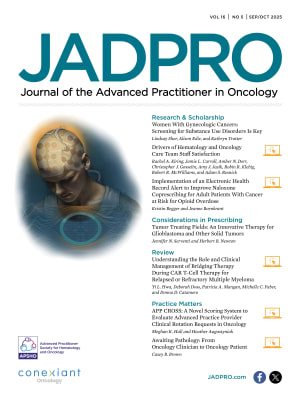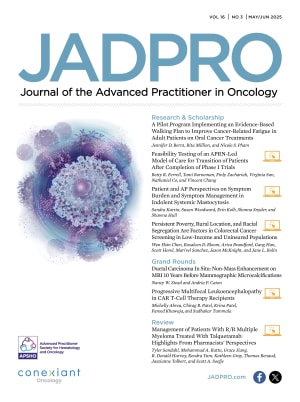Transcript
Hi everyone, I'm Sarah Profitt, I'm happy to be here today providing you some updates from 2025 SOHO Annual Meeting, which was held in Houston, Texas, in September of 2025. The final abstract regarding patients with myelofibrosis that I'd like to cover today is MPN-690. This was a study looking at momelotinib versus ruxolitinib in patients with myelofibrosis and moderate anemia, and this was a subgroup analysis from the SIMPLIFY-1 trial. Again, this is a subgroup looking at patients with moderate anemia, this was defined as a baseline hemoglobin greater than or equal to eight, but less than 10. This accounted for about 30% of the patient population from SIMPLIFY-1. What we found in this subgroup analysis was that spleen and symptom benefits were similar between momelotinib and ruxolitinib, which is consistent with the overall trial population, however, anemia-related benefits, so things like transfusion independence rates and transfusion independence status were numerically higher with momelotinib versus ruxolitinib, and when we look at the numbers, it was close to double the percentage of patients achieving those anemia-related benefits with momelotinib.
The investigators from this study also had a really nice dose intensity chart that was included for both medications, momelotinib and ruxolitinib, this was a nice visual confirmation of what I think we see in practice with ruxolitinib, and that is not all patients can maintain the recommended dose of ruxolitinib. You see a lot of differences in the dose intensity that patients in the ruxolitinib group we're able to maintain, and yet we still saw the same benefits in the overall population and in this subgroup when it comes to reducing spleen size and improving symptoms. As we know in clinic, appropriate dose adjustments can be made to ruxolitinib, and that's able to maintain the balance of benefit versus the collateral cytopenias in many patients.
However, even in patients with moderate anemia, so again, this is baseline eight to 10, in addition to severe anemia, like we might be typically used to seeing momelotinib used for, there are anemia related benefits to momelotinib over ruxolitinib. So if you have patients who are coming into these therapies who are already baseline anemic, we are able to achieve better anemia-related responses and higher transfusion independence rates when we use momelotinib, even in this sort of mild to moderate anemia subgroup. Whereas, in patients with preserved baseline counts, they're able to achieve the same sort of clinical benefits, symptom reduction and spleen volume that we come to expect from ruxolitinib because they're able to manage some of those collateral cytopenias that we see. So, really nice abstracts, really appreciated some of the detail that was included in this data, that helped confirm what we're seeing in the clinic.









